
NUMBER 23 | JANUARY / FEBRUARY / MARCH 2023 Cultural Bridges INFORMATION TO HELP FAMILIES NAVIGATE THE ISSAQUAH SCHOOL DISTRICT ENGLISH Highly Capable Programs Page 4 Safe Schools for Our Children Page 5 Family Life and Sexual Health Curriculum Page 9 Parenting Without Power Struggles Page 15
Dear Families,
I hope everyone had a lovely holiday season! While we are beginning this 2023, I want to send you very hearty New Year’s wishes from everyone here at Cultural Bridges.
I am fortunate to work with an amazing team of editors who put their hearts into making a difference in other people’s lives. I wish I could introduce you to all of them. But I can tell you that they work very hard to continue providing our community with information that they translate with love and care to the most spoken languages in our district.
I also wish I could introduce you to the Issaquah Schools Foundation team! Every week during our staff meeting, I leave inspired by the passion and compassion everyone works with to make sure we offer exceptional opportunities to every student at every school in our district.
And we have a new leader! Last fall, Cornell Atwater left the Foundation to enjoy with her husband a very well-deserved new chapter in their lives. Our gratitude for her dedication to our students is unmeasurable. And we are excited to now have Paul Pitkin as our Executive Director. I invite you to read his message (page 3) and get to know him. He brings years of experience to our organization.
My wish for you this new year is to feel assured that there are many passionate people working for our students. Not only the teachers and the Issaquah School personnel. Also, the Issaquah Schools Foundation staff, volunteers, and the many leaders of the local organizations that serve our students, such as the Issaquah Food and Clothing Bank (page 17) and Influence the Choice (page 18).
If you are looking for ways to enrich your life while making a difference, get to know your community, and meet the people who are impacting our students, let me know! I have been volunteering for more than ten years. At the Foundation, we have many opportunities for you to engage, and there are also many opportunities in our local organizations. I can help you find the right fit for you. Join our family!
Cheers to this new 2023 and our amazing community!
Alicia Spinner
Cultural Bridges Manager
Issaquah Schools Foundation
P. 425.391.8557 M. 425.295.4024 E. alicia@isfdn.org

Like us on Facebook @CBforeducation
Scan Me!
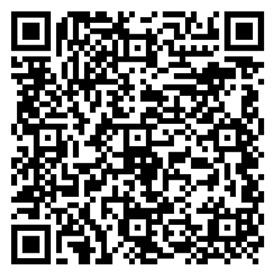
ALICIA SPINNER Program Manager
CHRISTIANA SCHUMANN English Editor
LAURA NI Editorial Assistant
NANA TSUJINO Japanese Editor
NATALIA ARGUTINA Russian Editor
NORMA RODRIGUEZ Spanish Editor
SARAH ONSTOTT Cover Designer
SHAIMA MANSOUR Arabic Editor

SONG PARK Korean Editor
TRAM PHAM Vietnamese Editor
YINGCHEN PHOTOGRAPHY Cover Photographer
YINGYING CUI Chinese Editor
2
Cultural Bridges Magazine, all rights reserved. Cultural Bridges Magazine is a free community magazine distributed locally and subsidized by Issaquah Schools Foundation. Its mission is to provide our community readers information that will enrich their quality of life covering topics such as education, health, nutrition, current events and the diverse culture in the city of Issaquah. Cultural Bridges for Education does not necessarily endorse or represent the views expressed in articles and advertisements found in the magazine, and is not responsible for the information, products and services that our advertisers published. Some parts of this publication may be a reproduction, translation or reprint where prior authorization is requested.
4 Highly Capable Programs 5 Safe Schools for our Children 9 Family Life and Sexual Health Curriculum 15 Parenting Without Power Struggles
To read/download all Cultural Bridges publications in Arabic, Chinese, English, Japanese, Korean, Russian, Spanish, or Vietnamese, visit: http://isfdn.org/cultural-bridges-magazine/
Greetings, Foundation Families and Friends,
It is a pleasure to introduce myself as the new Executive Director of the Issaquah Schools Foundation to Cultural Bridges readers and Issaquah School District families. I have served as an executive in non-profit organizations for the past twenty years, and I could not be more excited to bring my experience to the Foundation.

Throughout my career, I have learned that there is nothing more important to a child, a family, and a community than education. A quality education opens doors and breaks barriers that allow students to thrive and become integral members of their communities. The Issaquah Schools Foundation works every day to help open those doors, sometimes by bringing new and exciting educational opportunities to the students we serve. Every year we offer grants to teachers that fund innovative programs that enrich student learning. Last year one of those grants went to Gibson Ek High School in the Issaquah School District.
Gibson Ek’s proposal was to use a three-month class to have students build a canoe. Throughout the class, students are learning about everything that goes into building a canoe, including physics, geometry, math, collaboration, multimedia, and so much more. They are building the canoe from the ground up, planning the design, assembling models, and doing the actual woodworking that will produce not one but two
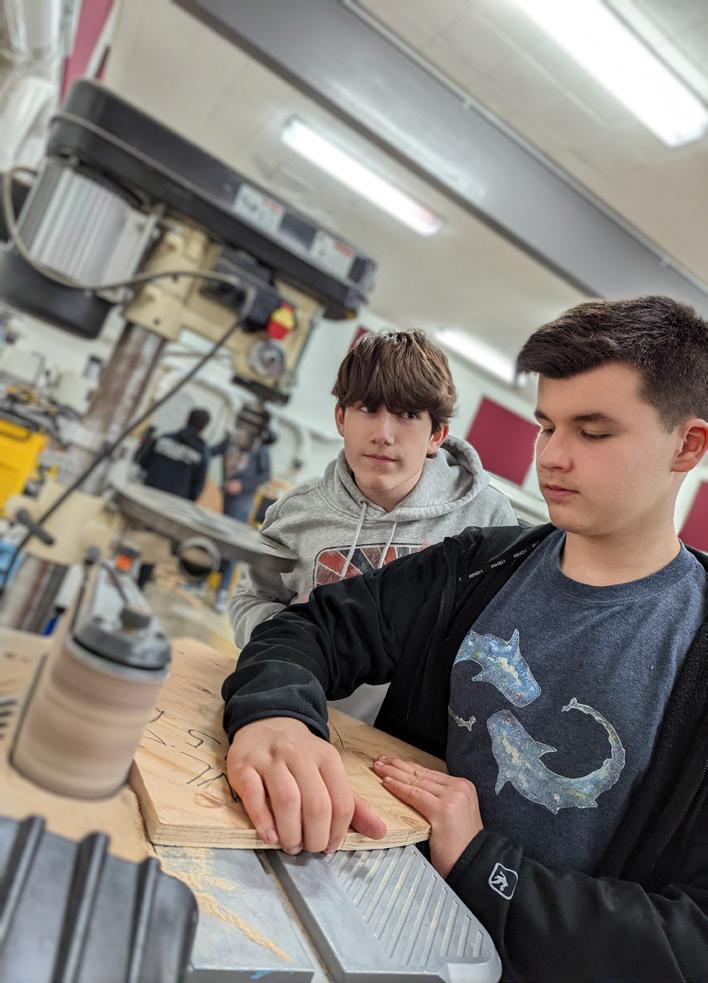
working canoes. The project is not just an opportunity to accomplish a long-term goal. It is also a chance to learn many different concepts in a hands-on manner that is different from the typical educational experience.
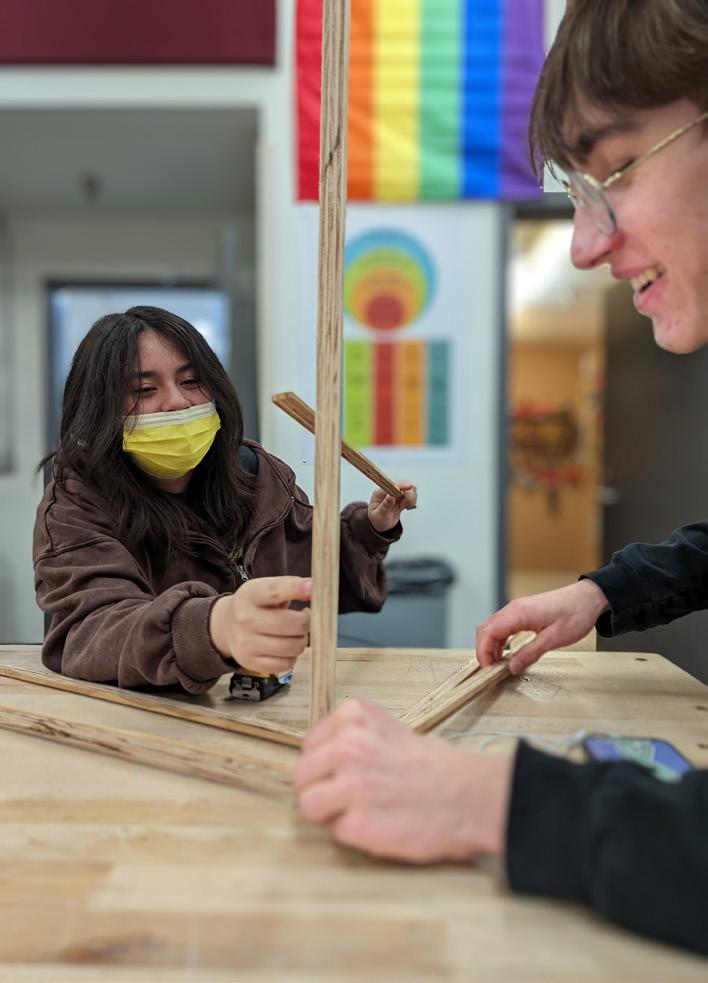
The Foundation funded all the numerous supplies needed for the project, including lumber and tools that can be used for future classes. We are very eager to see the final products!
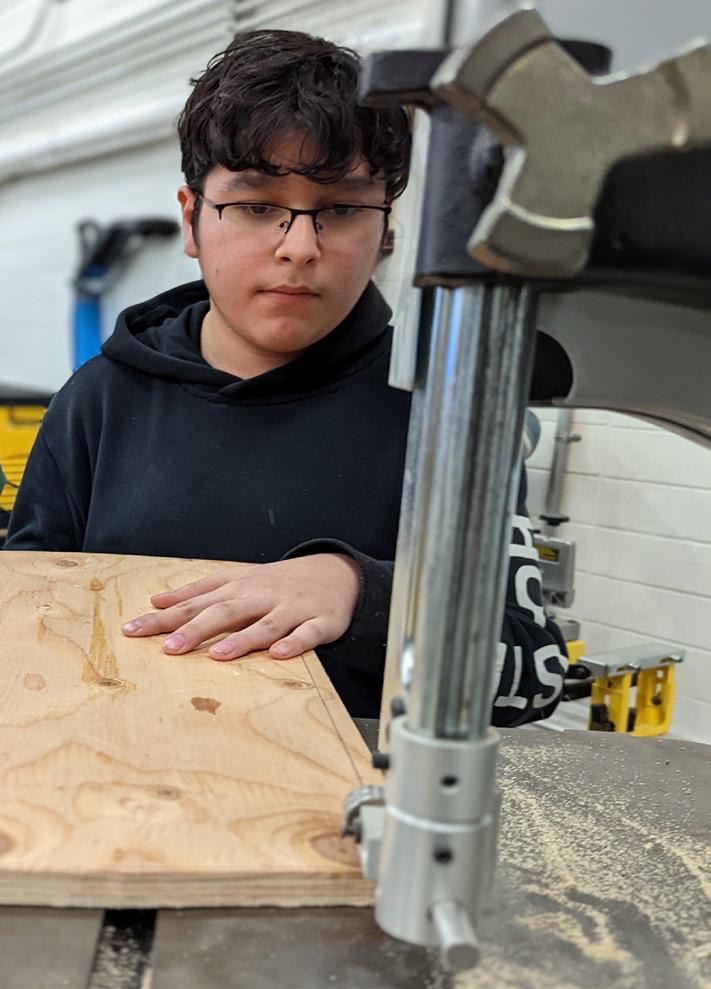
Gibson Ek’s canoe project is just one of the many ways the Foundation supports student achievement. We also provide after-school academic support to help students maintain and improve their GPAs, behavioral and mental health initiatives to put them in the best position to learn, food and basic needs to equip them with the tools they need to succeed, and much, much more.
I hope you will take the opportunity to learn more about how the Issaquah Schools Foundation supports and enhances the educational journey of Issaquah students. I also hope to have the opportunity to meet you! My door is always open, and I welcome any questions or feedback you may have.
Sincerely, Paul Pitkin Executive Director
Issaquah Schools Foundation P. 425.241.2953 M. 206.618.3761 E. paul@isfdn.org

3 ISSAQUAH SCHOOLS FOUNDATION
Donate Today isfdn.org facebook.com/ISFDN
Highly Capable Programs for Elementary
BY KRISTINA BLACKBURN SAGE/PEP Teacher at Challenger/ Newcastle Elementary
Cultural Bridges (CB): What are the PEP and SAGE programs? Are they the same or different programs?
Kristina Blackburn (KB): PEP stands for Primary Enrichment Program and is for grades kindergarten through 2nd grade. One time a week for 30 minutes in kindergarten. One hour a week in 1st and 2nd grades. In all elementary schools, there is a SAGE/PEP teacher who provides support for these services. In PEP, students work on special enrichment projects that incorporate a high level of cognitive demand. Besides math, students are also working on reading and writing components based on their needs. At the start of our lessons, we focus on Social Emotional components with a variety of read-aloud literature.

SAGE is under the same Highly Capable umbrella but stands for Special Approach to Gifted Education and serves grades 3rd-5th. Besides grade levels, another difference from PEP is that students qualify in either Math or Reading or both Math and Reading. SAGE students experience challenging activities designed to develop and enhance their problem-solving, creative-thinking, and process-thinking skills. Students also develop their social/emotional skills in
the areas of collaboration, confidence as a learner, responsibility, and quality of work.
In SAGE Reading, students work in book clubs, conduct research projects, and complete independent projects or STEM projects. The teacher mini-lessons are based on student needs and homeroom teacher input. Guided reading groups provide students the opportunity to read materials and receive instruction on comprehension strategies based on their individual instructional reading levels.
CB: Tell us a little about your position and what you do on a day-to-day basis as a SAGE teacher.

KB: Each week, I work with grades K-5 in small groups. Students come from their classrooms to my SAGE room. In my SAGE room, we focus on growing our math communication with a variety of Math Talks: number talk images, 3-Act math problem-solving, etc. Students are working on collaboration and problemsolving with group STEM activities.
As a SAGE team, we also support teachers by creating menus of math enrichment activities to have students complete when they have shown mastery of the content. We also go into classrooms to share best practices of math enrichment with classroom teachers and students.
SAGE teachers also support guided
reading groups through book clubs and provide push-in support with math games, problem-solving, reading ideas, etc. SAGE teachers also lead Professional Development meetings for classroom teachers to provide resources on how they can differentiate in their classrooms.
CB: Is there a formal district-wide PEP/ SAGE curriculum?
KB: There is not a formal district-wide curriculum for PEP/SAGE. The SAGE team looks at grade-level standards to create units that go deeper with the content. Students are taking the content knowledge from their classroom and applying that learning in a different way through our units. SAGE teachers center their units around a PBL (Project Based Learning) framework. A PBL is a teaching method in which students learn by actively engaging in real-world and personally meaningful projects.
CB: What are the benefits that PEP/
4
SCHOOL DISTRICT
ISSAQUAH
SAGE students will get from it?
KB: The benefits include: Expansion of academic attainment and intellectual skills; Stimulation of intellectual curiosity, independence, and responsibility; Development of a positive attitude toward self and others; Development of originality and creativity.
CB: Any interesting stories that you would like to share?
KB: This year, we are more intentional with trying something we are not sure is going to work. When we are solving math problems, I am always asking students to solve in a different way, to try something outside the box that may result in a wrong answer. From those mistakes, learning is happening. During one math talk, one of my students made a “mistake,” and instead of getting upset, they said, “let’s add it to our Epic Failure wall.” That was such an inspirational moment because that student celebrated that “mistake” and was able to turn that “mistake” into a positive moment.
ISSAQUAH SCHOOL DISTRICT
CB: Is there any regular curriculum learning loss during SAGE time? What do parents need to do to make sure there is no learning gap?
KB: Students who get into SAGE learn quickly, and they do not need as much instruction to understand concepts. They can miss some class time, and it does not impact them in a negative way. SAGE students also learn how to self-advocate for themselves. If they are missing an assignment that requires a grade, they will talk with their classroom teacher to see when they can make up that missed assignment while they are in SAGE. They can find another time in their day to complete that missed assignment.
Student Experience with SAGE Program
QUINN M.
5th Grader at Newcastle Elementary
I really like the SAGE program; it is something I look forward to every week. What I like most about the SAGE
program is that it’s not just about finding answers to problems but more about how you can solve a problem and why a strategy works. Mrs. Blackburn may give us a simple math problem and ask us how many different methods we can use to solve that problem instead of just asking us for the answer. This helps us think of different approaches when facing a difficult problem.
What is ONE suggestion they could give to families and other students that will be in SAGE in the future?
One suggestion I could give to other students entering SAGE is to not be afraid to speak your mind. Even if your idea isn’t the final answer, sharing ideas may inspire others to speak their mind too, and help the team come up with a solution. You cannot come up with a wrong idea.
Safe Schools for our Children How can YOU help
All Issaquah schools have an emergency management plan to respond to a crisis event. With the emergency management plan in place, the school, district, and emergency staff will respond accordingly. The school and district need parents’ support and ask parents to rely on communications from the school district. These are things that parents can and cannot do before, during, and after an Emergency.
Before an Emergency
o Ensure the emergency contact information in Family Access is accurate and current, including who is authorized to pick up your child.
o Explain to your child that cell phones should not be used during an emergency unless directed by a teacher, administrator, or emergency personnel.
o Please refrain from calling your student. Sound, vibration, or conversation could draw attention to your child’s location. Students also need to pay attention to instructions from their teachers and trained personnel.
During an Emergency
o Trust that emergency personnel and staff are doing everything to protect your child first, then they will communicate with you.
o Please listen to messages the district leaves on your voicemail. Their phone system is often flooded with calls from
parents who have not listened to the message.
o Please DO NOT call the school. In a crisis, school phone lines must remain open to manage the situation.
o Please DO NOT call or text your child. If a ringer is on, your call could give away their hiding spot or distract them from receiving instructions.
o Please DO NOT come to the school. No one will be allowed on campus during an emergency. Emergency personnel responding to the situation need the area clear to do their job. After emergency responders determine that a safe student release is possible, arrangements will be made to reunite children with their families.
After an Emergency
o Parents/Guardians will be directed to the reunification site. Photo identification is required for the release of students.
o Students will only be released to a parent/guardian and/or other adults listed on the student’s Emergency Information Form, which you filled out at the beginning of the school year. The individual picking up a student will be asked to complete a Student Release Form (given on site). This procedure is designed for your child’s protection and for your peace of mind.
o Please be aware that reunification can be time-consuming, and your patience will be appreciated.
o It is important to remain calm as children are greatly
ISSAQUAH SCHOOL DISTRICT 5
ISSAQUAH
SCHOOL DISTRICT
influenced by their family’s sense of well-being, and anything that families can do to reassure students will be helpful. At the same time, families need to be compassionate listeners when their children speak of the crisis. Seek help from the school, district, or community resources if you or your child have concerns.
Communication During an Emergency Remember: School staff is trained to protect students and manage the situation in a building first and then communicate with the district office. Information will be sent out from the district as soon as possible once the school and district are certain to have accurate information to share.
o The first and official way for the district to contact you in an emergency is using our Blackboard Notification system via email and in some situations, text and/or phone call.
o The district will use multiple channels to provide you with accurate and timely information.
o District website (isd411.org)
o Phone call
o Email
o Text message, if opted in
o District social media
o Facebook (https://www.facebook. com/IssaquahSchools/)
o Twitter (https://twitter.com/ IssaquahSchools)
o If necessary, local news media will be contacted and will be asked to help broadcast important information.
Talk to your children about safety. Make them aware they need to contact an adult if they see an incident happening. Kids tend to feel the need to protect their friends, but the best thing they can do for their friends and themselves is to walk away and report the incident to a staff member. The more bystanders there are during an incident, the more serious it becomes.
SchoolMessenger Texts
Parents and Guardians, OPT IN to stay informed about important information from the Issaquah School District! The District is using SchoolMessenger service to text families directly via their cell phones about school closures due to emergencies, safety alerts, and more. Participate in this free service by sending a text message of “Y” or “Yes” to the District at 67587 (ISD code number for texts).
Parents can also opt out of these messages at any time by simply replying to one of our messages with “Stop”.
SchoolMessenger is compliant with the Student Privacy Pledge (https://studentprivacypledge. org/), so you can rest assured that your information is safe and will never be given or sold to anyone.
All the school and district safety plans and protocols are not made public. Access is limited to first responders and district staff. However, Issaquah High School (IHS) shared some of their general and classroom safety practices with us. These are very similar to the ones for all middle and high schools. Hopefully, it will answer questions parents have concerning safety. If you want to have information regarding your children’s school, please feel free to contact the school principal.
These are some of the general safety practices at IHS:
SCHOOL OFFICERS There is a school safety officer on duty at the school, who is trained in the most up-to-date best practices including first aid, Safe Care, Narcan administration, Stop the Bleed training, CPR, AED, de-escalation techniques, and Crisis Intervention. Our security officers work with building administrative teams to ensure student and staff safety.
SECURITY AT THE DOOR To enter and leave the building, all visitors must ring the door. The school office personnel give the adults a name tag they must wear so everyone in the building can identify that they have already checked in.
SECURITY CAMERAS are located throughout the campus. During the day, security officers monitor the cameras. Their disclosure is not shared to ensure they are not disabled or intentionally avoided by someone wishing to avoid detection.
SUPERVISION IN THE CORRIDORS AND DINING ROOMS
This year, they increased the number of staff supervising the halls and dining rooms.
REPORTS Students, staff, and parents can report information anonymously about any safety concerns. They can text 425-4285511, send an email to 2130@alert1.us or submit information on the form: https://www.isd411.org/safety-concern
Students have a QR code on their IDs that directly goes to the form. When you submit a tip, be sure to use our district’s identification code: 2130 in your communication. It is very important to try to include as many details as possible. And if you feel comfortable sharing your contact information, please do so, so the school administrators can contact you in case they have follow-up questions.
SECURITY SYSTEM GAGGLE All computers provided to students have Microsoft Office software and the Gaggle security system, which is an online filter. This system alerts school officers about possible incidents, suicide & self-harm, violence towards others, and drug and alcohol substance abuse.
SAFE BATHROOMS In the bathrooms, there are sensors installed that alert school officers within seconds if someone is vaping or of any loud noise.
SAFETY DRILLS By law, all our schools are required to conduct at least one drill a month and must practice three basic functional responses: shelter-in-place, lockdown, and evacuation. The district’s protocol for an active shooter scenario is called Run-Hide-Fight. Run-Hide-Fight is considered a best practice by local law enforcement, who worked with the
6
Issaquah School District to bring this protocol to our schools. Schools also conduct at least one earthquake drill each year. Emergency Drills are also conducted on our school buses.
These are some of the classroom safety practices at IHS:

TELEPHONES AND EMERGENCY TELEPHONES Each room has a regular phone and an emergency phone that, when picked up, immediately activates an alarm that reaches school officials and notifies them exactly from which room the alarm is coming.
DE-ESCALATION TRAINING This was optional for all staff members, but many of the personnel took it at the beginning of the school year. They learned how to slow down, create space, and use communication techniques to defuse a potentially dangerous situation.
HALL PASSES All students who are in the hallways during class hours must have a pass that they can get from the school staff. These passes are to go to the bathroom or to go talk to a counselor, for example. Most of the fights that happen start in the classrooms, but these get more serious in the halls.
LOCKED CLASSROOM DOORS After several incidents in which students opened doors to play pranks, teachers were recommended to lock their doors. This practice helps with safety measures as well.
SAFETY PLANS In most cases, when a student is involved in an incident, a safety plan is put in place for themselves and those around them. These are always communicated to teachers.
What is a Safety Plan?
This is a document that enlists the measurements that are put in place to make sure a student is safe at school. It might involve a walking plan for the student to go from one class to the next, the use of certain bathrooms in the building, the use of safe spaces to release anxiety, a no-contact contract, etc.
A no-contact contract is a mutual agreement between two students who voluntarily affirm that they will not have direct contact with each other. The students sign the document that includes the consequences of breaking this agreement. It is important to understand that this plan is only valid at school, not outside the building.
Please note: It is important to know that if a student is being harassed and does not feel safe at school, he/ she or their parents can request to have a safety plan in place and to ask for the plan to be sent to them, to have it on writing. It is recommended to have a follow-up meeting to make sure the plan is working and to have the opportunity to ask to modify anything that is not working. The safety of all children is the number one priority for the Issaquah School District, and schools need the support and partnership of the parents.
Parents are encouraged to visit and bookmark the District’s Safety Web Page (https://www.isd411.org/about-us/safetyand-security) for more information.
To be consistent across the Issaquah School District, the District has developed the following list of terms to use in emergency situations. Please familiarize yourself with these terms:
o Lockdown: Occupants are kept in rooms or areas that are secured. No one is allowed to enter the building.
o Modified Lockdown: There is police activity or potential danger in the vicinity, such as a wild animal nearby. Instruction continues safely inside a secure building. Occupants remain in the classroom/building, and movement within the building is at the principal’s discretion. No one is allowed to enter the building.
o Reunification Site: Place where students are transported or assigned to meet due to unsafe conditions at the school site.
o Student Release Area: Location at the reunification site where parents may pick up students.
o Evacuation: All persons exit the building.
o Reverse Evacuation: Students return from outside to the safety of the school.
o Drill: The practice of a specific safety circumstance designed to prepare staff and students to act quickly and minimize questions and fears should an emergency take place.
o School Resource Officer (SRO): Uniformed police department officers assigned to schools to help build and maintain relationships between police, students, families, staff, and administrators.
o School Security Officers (SSO): Trained security personnel on duty at all high schools.
If a parent or student has any safety concerns at school, the best way to report them is to the principal. To learn more about Safety Concern tips or to submit a safety concern, please visit: https://www.isd411.org/safety-concern.
ISSAQUAH SCHOOL DISTRICT 7

8 Overlake Clinics – Issaquah Urgent Care Every Day, 7 a.m.–11 p.m. Phone: 425.688.5777 5708 E Lake Sammamish Pkwy SE Issaquah, WA 98029 Overlake Clinics – Sammamish Urgent Care Monday–Saturday, Noon–10 p.m. Phone: 425.635.3080 22630 SE 4th St, Suite 300 Sammamish, WA 98074 Overlake Clinics –Sammamish SE 4th St 228th Ave SE SE Black Nugget Rd E Lake Sammamish Pkwy SE Overlake Clinics –Issaquah Urgent care for the entire family. Get in line online at overlakehospital.org/urgentcare No appointment needed.
Family Life and Sexual Health Curriculum
In many countries, how the reproductive system works is taught in biology or science classes. In other countries, sex education is totally absent or considered an extra-curricular lesson. Some nations only focus their school teachings on the biological aspect and do not include birth control or consent.
In the United States, schools' curriculum varies widely from state to state. In the Issaquah School District, the reproductive system
and other related areas are covered in a class called Health. And FLASH is the sexual health education curriculum that is used, and that was developed by the Seattle & King County Public Health.
Sexual health instruction must be: Medically and scientifically accurate, Age appropriate, Appropriate for students regardless of gender, race, disability status, or sexual orientation and Consistent with the OSPI Guidelines for Sexual Health and Disease Prevention.
FLASH is designed for students in grades 5 through 12 and divided by grade level into three separate curricula: 5/6 FLASH, 7/8 FLASH, and High School FLASH. There is also a version for special education students ages 11-
Grade 5 Grade 6 Grade 7 Grade 8
Family Self Esteem Reproductive
21 in self-contained classes. Each curriculum contains approximately 20 lessons.
FLASH promotes a foundation of positive and healthy sexuality across the lifespan, focusing on the needs of public schools. The curricula, in developmentally appropriate lessons, focus on abstinence while also providing information on preventing pregnancy and sexually transmitted diseases (STDs), including HIV.
All FLASH Lesson summaries can be found on King County Public Health Website: https://kingcounty.gov/ depts/health/locations/ family-planning/education/ FLASH.aspx
FLASH Instruction FLASH recognizes that families have the important role of teaching values and expectations to their children. Therefore, the key part of FLASH is its strong family involvement component. In this link, you can find useful materials as family homework in different languages. https:// kingcounty.gov/depts/health/ locations/family-planning/ education/FLASH/parents. aspx
Under the Federal Hatch Amendment of 1974, all sexual education instructional materials must be available for parent inspection. And parents have the right to exempt their child from sexual education instruction at any time. The Issaquah School District will hold the 5th-grade FLASH materials parent preview on March 9 from 6:00- 7:30pm and again on March 11 from 9:00 -10:30am at the ISD Administration Building. The 5th-grade FLASH materials will be out for viewing in the month of March.
HIV/AIDS Instruction
In recognition of the significant threat that the HIV/AIDS virus presents to the health of the people of our nation, the Washington state legislature passed the Omnibus AIDS Bill in 1988. This law directs local school districts to provide yearly instruction to students in grades 5-12 about the pathology and prevention of the HIV/AIDS virus.
Parents do not need to attend a public reviewing session if they do not intend to exempt their children from HIV/AIDS instruction. But the Washington State Omnibus AIDS law requires a parent to attend a public viewing session and review the materials before such an exemption may be requested or granted.
Questions?
For Elementary: Contact your student’s teacher or the Director of Teaching and Learning, Michelle Pickard at 425-837-7076, or email her at pickardm@issaquah.wednet. edu.
For Middle School: Contact your student’s teacher or Director of Teaching and Learning, Dawn Wallace at 425-837-7043, or email her at WallaceD@issaquah.wednet. edu.
For High School: Contact your student's teacher or Director of CTE and Secondary STEM, Lisa Neighbours at 425-837-7046, or email at NeighboursL@issaquah. wednet.edu.
9 ISSAQUAH SCHOOL DISTRICT FLASH
and
and
Self
Sexual Exploitation
and
Identity
Identity
Rules
Dating
Dating Friendship Reproductive System
Decision
Reproductive System Preventing
Puberty HIV/AIDS Birth
Methods Reproductive System Pregnancy HIV/AIDS Grades 9, 10 and 11 1. Climate Setting 2. Reproductive System 3. Pregnancy 4. Sexual Orientation and Gender Identity 5. Undoing Gender Stereotypes 6. Healthy Relationships 7. Coercion and Consent 8. Online Safety: Sexual Violence Prevention 9. Abstinence 10. Birth Control Methods 11. Preventing HIV and Other STDs 12. Condoms to Prevent Pregnancy, HIV and Other STDs 13. Testing for HIV and Other STDs 14. Communication and Decision Making 15. Improving School Health For Grade 12 (taught via Canvas) 1. Climate Setting 2. Healthy Relationships 3. Coercion and Consent 4. Pregnancy 5. Abstinence 6. Birth Control Methods 7. Condoms to Prevent Pregnancy, HIV and Other STDs
System
Pregnancy Reproductive System
Pregnancy
Esteem
Sexual Orientation
Gender
Sexual Orientation and Gender
Gender Roles Puberty
of
Rules of
Saying No Saying No
Making
STDs Preventing STDs Sexual Exploitation Pregnancy Preventing HIV and Other STDs Condoms, Preventing HIV and Other STDs
Control Methods Birth Control
DISTRICT Who to Contact?
Type of Question or Topic
Attendance
Contact Person
School office via email or phone call
Contact Information Other
On the school website, click on Our School on the top bar, select Attendance. Email and contact information on the site.
Leave the name of your child, date of absence, reason for absence.
Pre-arranged absence forms found on Attendance website.
Bus – General
Transportation Department via email or phone call
Transportation main line–425-837-6333 Transportation-Enews@ issaquah.wednet.edu
Bus – Routes
Transportation Department Routing via email or phone call
425-837-6342 Transportation-Enews@ issaquah.wednet.edu
Emergency Transportation bulletin for snow routes, closures or delay: https:// www.isd411.org/programsservices/buses/emergencytransportation-bulletin
Use E-LINK to find bus route Also includes Activity routes (Grades 6-12) for afterschool activities: https:// versatransweb05.tylertech. com/Issaquah/elinkrp/Login. aspx
Bus – Dispatch
Transportation Dispatch via phone call 425-837-6329
Call this number when student gets on wrong bus, gets off at wrong stop, for students in special services, pre-K or ECAP if they are not riding the bus that day.
Family Access/Skyward
Student Access (Grades 6-12)
School Main office via phone call
Student Access – students ask the School registrar
Registration to the ISD School Main office phone call
For students enrolled in the ISD, contact the school office for help with Skyward For grades 6-12 – Ask for the school Registrar.
Contact your local school if you have questions or need help with the process.

Family Access: https://www. isd411.org/portals/familyaccess
New Student Enrollment: https://www.isd411.org/ enrollment/new-studentenrollment
10
ISSAQUAH SCHOOL
Type of Question or Topic Contact Person Contact Information
Clever (Grades K-5 only) or Apps on Clever
Canvas for Parents (Grades 6-12 only) or Apps on Canvas
Canvas for Students (Grades 6-12 only) Apps on Canvas
School Laptop Hardware or Login Issue
Fines or Fees
Parent or student, contact teacher for support via email.
IT person at the school building via email.
Teacher or school librarian via email.
ISDEdTechHelp@issaquah. wednet.edu.
Other
Additional questions: ISDEdTechHelp@issaquah. wednet.edu
Canvas (Grades 6-12): https:// www.isd411.org/portals/ grades-6-12
Additional questions: ISDEdTechHelp@issaquah. wednet.edu
IT person at the school building via email. Check with the school office for help.
Elementary schools: Staff in school office via email or phone call.
Middle and High schools: Bookkeeper via email or phone call.
Use link to pay fines online: (intouchreceipting.com) or visit school office and pay in person.
Lunch information or Free and Reduced Lunch
Lunch Balance
ISD Food Services office via phone call
425 837-5060
Additional contact people, emails, and numbers on ISD Lunch website: https://www.isd411.org/ programs-services/lunch
ISD Food Services office via phone call 425 837-5060
Families can look up the lunch balance for students in Family Access/Skyward under the Portfolio tab, Run a report with Lunch number and Lunch balance.
This includes charging cables issues.
Pick up items in school planners, PE uniforms, etc., in person at school at the bookkeeper window/office.
Application in English: https://www.myschoolapps. com/Application Free and reduced lunch applications are available in 49 languages.
Families can also look up balance and add more money to lunch account online at MySchoolBucks: https:// www.isd411.org/portals/ myschoolbucks
Lunch menu
ISD Food Services office via phone call. Please contact your school’s kitchen about specific products on the menu.
425 837-5060
For menus, pricing, allergens, ingredients, and dietary needs: https://www.isd411. org/programs-services/lunch
Social or Mental Health Concerns for Students
School counselor via email or phone call https://www.isd411. org/programs-services/ counseling-and-mentalhealth/school-counselors
Middle and High school – the school counselors are assigned based on the student’s last name. There is a Swedish Mental Health counselor also at each school: https://www.isd411. org/programs-services/ counseling-and-mentalhealth/mental-healthservices
11 ISSAQUAH SCHOOL DISTRICT
ALL SCHOOLS
Jan. 16: Martin Luther King Jr. Day, No School.
Jan. 27: Teacher Work Day, No School.
Feb. 20 – 24: Second Winter Break, No School
ELEMENTARY SCHOOLS
Jan. 12-26: iReady Spring Reading Assessment, K-5
Feb. 6-17: iReady Spring Math Assessment, 1-5
Mar. 7-9: 2nd Grade Universal CogAT and TTCT tests
Mar. 16: Report cards available in Family Access
Apollo
Jan. 6: Winter Festival, 6PM – 8PM
Jan. 13: Popcorn Friday
Feb. 1: PTA General Membership Meeting, 6:30 PM
Feb. 6: Talent Show & MC Registration Open
Mar. 13: Talent Show MC Audition, 4PM
Mar. 15: Talent Show Performers Audition, 1:45PM
Mar. 22: School Picture Day – Group Picture
Mar. 29: Talent Show Rehearsal, 1:45PM
Mar. 31: Talent Show Performance, 6PM
Briarwood
Jan. 3 – 27: Winter Spirit Wear sales
Jan. 9 – Feb. 8: Little Caesars Fundraiser
Jan. 10: PTA General Membership Meeting, 6:30PM
Jan. 20: Family Movie Night, 6PM
Feb. 3: Popcorn Friday
Feb. 10: Family Dance Night
Feb. 17: Popcorn Friday
Mar. 1 – 10: Online Audition
Mar. 3: Popcorn Friday
Mar. 21: PTA General Membership Meeting, 6:30PM
Cascade Ridge
Jan. 9: Eager Reader Begins
Jan. 11: New Family Connection at Aroma Coffee, 9:45AM
Jan. 11: Parent Culture & Connection Chat on Zoom, 6:30PM
Jan. 20: Movie Night
Jan. 24: PTSA General Meeting, 6:30PM
Feb. 1: Spelling Bee
Feb. 11: Issaquah Food Bank Drive
Mar. 1: Parent Culture & Connection Chat on Zoom, 6:30PM
Mar. 1 – 3: Book Fair/Read Across America
Mar. 7: PTSA General Meeting, 6:30PM
Mar. 21: STEM Fair
Cedar Trails
Jan. 16: Chipotle Fundraiser, 5PM – 9PM
Feb. 2: PTSA General Meeting, 6:30PM
Challenger
Jan. 20: Winter Movie Night, 6PM
Clark
Jan. 17: PTA General Meeting, 6:30PM
Jan. 20: Coffee with Christy, 9:30AM – 10:30AM
Mar. 9: Staff Appreciation Lunch, 12PM
Mar. 14: Coffee with Christy, 9:30AM – 10:30AM
Cougar Ridge
Jan. 8: Last Day of Bellevue Ice Skating Fundraising
Jan. 17: PTSA General Meeting, 6:30PM
Jan. 20: Lunar New Year Celebration, 6PM
Feb. 7: Incoming 2023-24 Kindergarten Parent Meeting, 6PM
Feb. 7: PTSA General Meeting, 6:30PM
Feb. 8 – 9: Spelling Bee
Mar. 7: Art Fair, 6PM
Mar. 21: PTSA General Meeting, 6:30PM
Mar. 30: Science Fair/STEM Night
Creekside
Jan. 22: Yearbook Cover Design Contest Deadline
Mar. 14: PTSA General Membership Meeting, 7PM
Discovery
Jan. 6: Popcorn Friday
Jan. 6 – 24: Eager Reader
Jan. 8: Last Day of Bellevue Ice Skating Fundraising
Jan. 13: Popcorn Friday Jan. 20: Popcorn Friday Feb. 3: Popcorn Friday Feb. 10: Popcorn Friday Feb. 17: Popcorn Friday
Mar. 3: Popcorn Friday Mar. 10: Popcorn Friday Mar. 17: Popcorn Friday Mar. 24: Popcorn Friday Mar. 31: Popcorn Friday
Endeavour
Jan. 19: PTSA General Meeting, 7PM Feb. 27 – Mar. 3: Read Across America Mar. 16: PTSA General Meeting, 7PM
Grand Ridge
Jan. 23: PTSA General Meeting, 7PM Jan. 25: Incoming Kindergarten Round-Up, 6PM
Issaquah Valley
Jan. 18: PTA General Meeting, 7PM Mar. 15: PTA General Meeting, 7PM
Maple Hills
Jan. 6: Popcorn Friday Jan. 17: Eagle Reader Clubhouse Jan. 20: Popcorn Friday Feb. 3: Popcorn Friday Feb. 9: Music Performance 2nd Grade, 6PM Feb. 14: Eagle Reader Clubhouse Feb. 16: Music Performance 1st Grade, 6PM Feb. 17: Popcorn Friday Mar. 3: Popcorn Friday Mar. 16: Music Performance 3rd Grade, 6PM Mar. 21: Eagle Reader Clubhouse Mar. 22 – 24: Science Fair Mar. 24: Family Engineer Night, 6PM Mar. 30: Music Performance 4th Grade, 6PM Mar. 31: School picture day, class picture Newcastle Jan. 11: PTSA General Meeting, 7PM Jan. 20: Community Coffee Talk with Principal Tod Wood Mar. 10: Auction: There’s Magic in the Air Tonight Mar. 24: Community Coffee Talk with Principal Tod Wood
Sunny Hills
Jan. 17: PTA General Meeting, 11:30AM Jan. 24: Bingo and Brownie, 5:30PM – 7:30PM Mar. 15: After School Movie Mar. 24 – 25: Scholastic Spring Book Fair Mar. 28: Picture Day – Class Picture Mar. 28: PTA General Meeting, 6:30PM
MIDDLE SCHOOLS
Jan. 14: Middle School Wrestling Finals @ Pine Lake
Jan. 25: Mid-Trimester 2 Mar. 16: 2nd Trimester Ends, Report Card Writing – Early Release @ 10:55 AM
Mar. 23: Trimester 2 Grades available in Canvas and Family Access
Mar. 29: Eastshore Regional MS Band Festival, 8AM-11:25AM
Cougar Mountain
Jan. 8: Last Day of Bellevue Ice Skating Fundraising
Jan. 18: PTSA Bingo Night, 5:30PM Jan. 19: PTSA General Meeting, 7PM Mar. 24: PTSA General Meeting, 10AM
Issaquah
Jan. 18: PTSA General Meeting, In-Person, 6PM Jan. 25: Most Valuable Panther Celebration, 12PM Jan. 27: Java with JZ, 10AM
Feb. 15: PTSA General Meeting, Zoom, 6PM-8PM Mar. 15: PTSA General Meeting, In person, 6PM Mar. 24: Java with JZ, 10AM
Maywood
Jan. 19: Coffee with Crystal, 9AM-9:30AM Jan. 19: PTSA General Meeting, 6PM Feb. 15: Orchestra Performance, 6:30PM Mar. 23: Coffee with Crystal, 9AM-9:30AM
Pacific Cascade
Jan. 13: PTSA General Meeting, 12PM Feb. 15: Choir Pyramid Concert, 7PM Mar. 24: PTSA General Meeting, 6PM Mar. 28: Band Concert, 7PM
Pine Lake
Jan. 8: Last Day of Bellevue Ice Skating Fundraising
Mar. 7: PLMS Band Concert, 7PM Mar. 9: PLMS Orchestra Concert, 6:30PM Mar. 20 - 25: Speech and Debate Tournament
HIGH SCHOOLS
Jan. 23 – 26: First Semester Finals
Jan. 30: Second Semester Begins
Feb. 2: Semester 1 Grades Available in Canvas and Family Access Mar. 10: Midterm Grades Available in Canvas
Gibson Ek
Jan. 4: Staff Appreciation Luncheon
Feb. 1: Staff Appreciation Luncheon Mar. 1: Staff Appreciation Luncheon
Mar. 14: PTSA General Meeting, 6PM
Mar. 20: Half Day, Early Release
Issaquah
Jan. 9: Family, Career and Community Leaders of America (FCCLA) meeting.
Jan. 14: NJROTC Graham Kapowsin Drill Meet
Jan. 17: PTSA General Meeting, 6:30PM
Jan. 28: Robotics Field Trip
Feb. 6: FCCLA Meeting
Feb. 8: Choirfest Invitational, 5:30PM
Feb. 14: Jazz Night with MMS, CMMS
Feb. 16: Orchestra Concert, 7PM
Feb. 16: Staff Appreciation Luncheon
Feb. 27: Choir Dress Rehearsal, 3PM
Feb. 28: Spring Choir Concert, 7PM
Mar. 3 - 5: Robotics Field Trip
Mar. 6: FCCLA Meeting
Mar. 8: Sunmark Concert (TBD), 6:30PM
Mar. 9: Band Concert, 7PM
Mar. 11: Mattress Sale Fundraiser
Mar. 13: Nguyen Concert (TBD), 6:30PM
Mar. 14: Incoming Freshman Night
Mar. 16: Eastshore Choir 2
Mar. 31 – Apr. 2: Robotic Field Trip
12 CALENDAR
Liberty Jan. 9: Family, Career and Community Leaders of America (FCCLA) meeting.
Jan. 14: NJROTC Graham Kapowsin Drill Meet
Jan. 17: PTSA General Meeting, 6:30PM
Jan. 28: Robotics Field Trip
Feb. 6: FCCLA Meeting
Feb. 8: Choirfest Invitational, 5:30PM
Feb. 14: Jazz Night with MMS, CMMS
Feb. 16: Orchestra Concert, 7PM
Feb. 16: Staff Appreciation Luncheon
Feb. 27: Choir Dress Rehearsal, 3PM
Feb. 28: Spring Choir Concert, 7PM
Mar. 3 - 5: Robotics Field Trip

Mar. 6: FCCLA Meeting
Mar. 8: Sunmark Concert (TBD), 6:30PM
Mar. 9: Band Concert, 7PM
Mar. 11: Mattress Sale Fundraiser
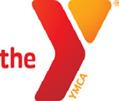
Mar. 13: Nguyen Concert (TBD), 6:30PM
Mar. 14: Incoming Freshman Night


Mar. 16: Eastshore Choir 2
Mar. 31 – Apr. 2: Robotic Field Trip
Skyline
Jan. 26: PTSA General Meeting, 6:30PM
Mar. 30: PTSA General Meeting, 6:30PM



ISD Family Events
The District's Family Partnership organizes these events in collaboration with Cultural Bridges. All families with students in the District are welcome to attend.
All sessions are in English, Spanish, and Mandarin. Interpreters in other languages are available upon request. If you need an interpreter in another language, contact Lorna Gilmour at: gilmourl@issaquah.wednet.edu. And if you would like to participate in helping at any of these events, contact Alicia Spinner at: alicia@isfdn.org.
For more information, visit: https://www.isd411.org/programs-services/equity/parentevents-and-workshops
5th Grade Transition Night for Families New to the U.S. January 11, 6:30PM – 8:30PM
Topics will include course selection information, elective class options such as orchestra and choir, PE/Health classes, sports, clubs, health/immunization, costs/fees, and supplies.
8th Grade Transition Night for Families New to the U.S. January 25, 6:30PM – 8:30PM
Topics will include high school credits, graduation requirements, high school opportunities, general information about course selection, and programs such as AP, IB, and Running Start.
Welcome to the ISD for Incoming Kindergarten Parents
March 15, 6:30PM - 8:30PM
Topics will include what kindergarten looks like in the District, the age of students entering, kindergarten preparedness, transportation, lunch, costs/fees, hours, health, and immunization.
Cultural Events
Chinese Book Club
Saturday, January 21, 2023 2:00PM – 3:30PM
Bellevue Library: 1111 110th Avenue NE
Share your thoughts and discuss your point of view in Mandarin. Books are available during the previous month’s meeting. For more information in Mandarin, contact Liang Du at duliang@hotmail.com.
TET – Vietnamese Lunar New Year
January 14-15 at Seattle Center [305 Harrison St, Street WA] Inviting the community to a celebration of the lunar new year with lion dances, firecrackers, martial arts, dance, and visual arts.

Irish Festival
March 11-12 at Seattle Center [305 Harrison St, Street WA] Highlighting the Irish heritage of the Pacific Northwest with traditional music, step-dancing, art exhibits, genealogy workshops, and Celtic handcrafts.
French Festival March 19 at Seattle Center [305 Harrison St, Street WA]
Celebrating the place of French language, culture, and joie de vivre in over 30 countries worldwide with francophone fashion, fine cuisine, wine tastings, and a wide array of musical performances.
13 CALENDAR
2 23 SAMMAMISH L U N A R CELEBRATION NEW YEAR
and Lion Dances
by Local Artists Martial Arts Demonstrations
Booths
Truck
Saturday, January 21st 1:00 PM 4:00 PM CWU - Sammamish Dragon
Performances
Educational
Raffles Food
Transcend: The New Science of Self-Actualization
Last September, ParentWiser invited Scott Barry Kaufman, Ph.D., to give a speech on how to help children realize their potential and thrive. Using his research, knowledge of science, and wisdom gained through personal experience, Kaufman offered insight into how our students can live a more creative, fulfilling, and self-actualized life.
others, valuing the dignity and worth of everyone, forgiveness, trust, and healthy self-love.
Need for Purpose involves healthy goals & motivations, grit, equanimity, harmonious passion, use of signature strengths, hope, environmental support, and knowing when to move on.
Healthy transcendence comes because of the deep integration of all these different needs. If parents or adults can really help students integrate their needs and get them working on something that is deeply in line with their potential and their dreams/motivations, we can help children get to the Transcendent State of Consciousness.
There are a lot of things adults can do to help their children to fulfill their potential:
Imagination
It is important that adults appreciate openness to experiences as an important personality trait. Those who engage the imagination brain network tend to have a higher openness to experiences and higher creativity.
Perseverance
Instilling perseverance is key, as much as recognizing that efforts matter. Always reward effort because over the long-run, effort counts twice as much as talent!
The Achievement Formula: Skill = Talent x Effort; Achievement = Skill x Effort.
Hope
Give students hope to pursue the goal they really care about. This will energize them and give them the energy needed to get lots of different ways/ideas to achieve it.
First, there are three basic needs that our students need to be met before they can be happily motivated:
Need for Safety means no extreme poverty, food certainty, secure attachment, and no harshness or unpredictability in the environment.
Need for Connection means a student feels a sense of belonging, acceptance from others, intimacy, and relatedness.
Need for Self-Esteem means self-worth and healthy regulation of narcissism. Parents tell their kids they are enough instead of telling them they are the best. Being able to instill a basic sense of worthiness and competence is important.
When these three basic needs are covered, children eventually transcend to their potential/self-actualization and leading them to:
Need for Exploration includes students’ social exploration, adventure seeking, post-traumatic growth, openness to experience, and intellectually exploring in their minds.
Need for Love includes treating people as ends into themselves, universal acceptance of others, seeing the best in
Passion
Making sure this is harmonious and not obsessive. Harmonious Passion involves a sense of freedom and flexible engagement. These are activities that reflect things children like about themselves, and the activities are so well integrated into their authentic selves that they are in harmony with the other aspects of their lives.
Instead, obsessive passion causes a loss of control over activities. Children feel pressure to engage either because of contingencies like social acceptance or self-esteem or because of an uncontrollable urge. The activities have not been well integrated into identity – ego depends on the activity, and rigid persistence frequently conflicts with other aspects of life.
Inspiration
Adults or parents also want to be able to inspire students. Inspire being spontaneous and without intention, going beyond self-serving concerns and striving to transmit, express or actualize a new idea or vision. Inspiration helps students have a more optimistic mindset about things and be in a state of positive emotions.
Scott also talked about the importance of helping adolescents imagine possibilities for a better world and place for themselves and others. He spoke about targeting various aspects such as attitude toward learning, engagement, and giving students an “authentic voice,” in which they feel as though they are making choices that have a real impact on their desired future.
Lastly, he mentioned how much the environment matters. Having a setting or a culture where everyone has high expectations for success is only going to help raise the tide for everyone.
At the end of his speech, Scott emphasized that self-care is an essential part of this whole process, and there are a lot of methods to help when parents/ adults feel overwhelmed.
To check Scott Barry Kaufman’s fulllength lecture, please go to https://www. parentwiser.org/.
Scott Barry Kaufman, renowned humanistic psychologist and cognitive scientist. Kaufman has authored multiple books on intelligence, creativity, personality, and well-being. His latest book is Transcend: The New Science of Self-Actualization. He is a regular contributor to The Atlantic and Scientific American and the host of “The Psychology Podcast.”
14 PARENT ED
10 characteristics of self-actualizing people: Truth-seeking Continued freshness of appreciation Acceptance Authenticity Equanimity Purpose Humanitarianism/social interest Peak experiences Good moral intuition Creative spirit
Parenting Without Power Struggles
overrides many problems. This is fundamental. Children have a pre-loaded inclination to not cooperate with anyone they are not closely attached to. It is a really a good mechanism for their survival. Obviously, parents want to be the ones their children cooperate with, but that means they must have a strong and durable attachment. When the connection is weak, often, the way it shows up is that the kids will say “no” to everything their parents ask. And then, kids withdraw and go to their friends instead of going to their parents.
Based on psychologist Gordon Neufeld’s book “Hold on To Your Kids”, there are six stages that a child moves through in their first six years of life in terms of developing a sturdy and strong attachment to their primary caregiver. Understanding them will allow the parents to be the captain of the ship.

Do you want parenting to be a bit easier and more fun? Last October, ParentWiser invited Susan Stiffelman to teach tools that can have the power to improve parenting life. Parents learned how to avoid the power struggles that once seemed inevitable, how to find calm when temporarily lost, and discover how to maintain confidence even during parenting storms.
Susan started her speech by encouraging parents to honor and trust their own knowledge and instincts even when what they know or feel with their kids is not what they experienced themselves growing up.
Susan listed three things parents can learn to improve their relationship with their children and have fewer power struggles.
1. When parents are the captain of the ship for their children, there is a calm and reassurance that they lend to the kids as they navigate through the storms of their lives. Being a captain of the ship does not mean you are better or you are in control. It is about being in charge. It means that you are capable and can handle whatever might happen to your children or your family. You are the one who has the sturdiness.
When something happens in the family, have a family meeting, and start the meeting in a loving way by appreciating everyone. Acknowledge the good things in the family and state the problem. Announce what is going to happen to make things run more smoothly. Teach children how to work together to solve problems. The captain is not afraid to set limits to establish routines to work collaboratively with children. It is fine if children do not like it, but the captain should be clear and decisive. A parent’s job is to support children and set clear limits and boundaries so that children have lanes to operate within. It is the children’s job to learn to navigate; parents offer the structure, guidance, and support. Being the captain of the ship avoids power struggles.
2. Strong, sturdy loving connection/attachment with the kids
I. Proximity is how a baby begins to bond through touch, the sound of parents/caregiver’s voices, and smell. It is a very tactile scent-oriented form of attachment. Proximity in later years shows up as the invitation to exist in your presence. This is when a parent invites the child to spend time with them or when parents seek their children’s company even when the child gets older. One of the ways to strengthen attachment through proximity is to initiate time with the child instead of the child begging for it.
II. Sameness is developed around the age of two. It is looking for ways to reinforce how we are alike. This is how children learn language because they want to be like us, so they learn to mimic us. As the kids are older, we strengthen the attachment through sameness by doing things that pursue an interest that we share with a child.
III. Belonging/loyalty is the sense that the child feels you are on their side. With a three-year-old, you will often see it as possessiveness. As the child gets older, we show up for them with belonging or loyalty by making them a cup of tea when they are studying for an exam or rubbing their shoulders, etc. We make it safe for them to tell us what they are going through instead of judging them or freaking out.
IV. Feeling special starts at the age of four. This means the child wants to be seen by you for who they are instead of what they do or what they accomplished. As the child gets older, let them know that you love something about them or you are delighted simply by their presence.
V. Significance love is so powerful and starts around the age of five. No matter what the child’s age, show them the warmth in your voice when you say their names. Put down the phone, look up, and show them your smile to tell them you notice them.
VI. Being K-N-O-W-N is the final stage at the age of six. The child tells the parents their secrets. They feel safe to turn to you, confide in you, and confess to you.
3. Make it safe for the child to come to you or turn to you to ask for help instead of their friends when they are struggling.
PARENT ED 15
Believe it or not, the child wants to come to their parents. They want to confide in you or talk to you even though they also want to talk with their friends, especially during adolescence. It is very important that parents make it safe for their kids to turn to them.
Ask the question, “Why does this behavior make sense?” when approaching a predicament or a difficult situation instead of thinking about how to make this different or how to make this stop. The kids do not turn to their parents because their experience has taught them that it is risky to turn to them. So, the behavior of turning to their friends makes sense. It makes sense if we have taught the child unintentionally that when they tell us something unpleasant, it brings on our own anxieties or frustrations or worries, which tell the kids we cannot handle it.
How can you make it safe for the child to come to you again? Acknowledge the truth and apologize with humility and honesty. Tell your kid that you might have rushed in with advice when they turned to you before. Tell them you would be willing to try and get some practice in just learning to listen. Parents often lose their captain status because they often panic.
Try three golden sentences to start the conversation with your child:
These are powerful and reassuring words for a youngster to hear. This tells them that you are not reacting, freaking out, yelling, threatening, or punishing. Susan assured that those three things will help parents maintain authority and have an easier time, having fewer power struggles with their kids.
To check out Susan Stiffelman’s full-length lecture, please visit https://www.parentwiser.org/. Also, visit https:// susanstiffelman.com/ for more lectures or text 310-905-8165 the word “newsletter” to subscribe to the most recent updates.
Susan Stiffelman is a marriage and family therapist, a credentialed teacher, and a licensed psychotherapist. For over 30 years, she has worked with families to create greater harmony and deeper connection between parents and children. Susan also delivers weekly parenting advice for the Huffington Post as their “Parent Coach.” She has authored many critically acclaimed books, including, Parenting Without Power Struggles Raising Joyful, Resilient Kids While Staying Cool, Calm, and Connected.
Joining a New Community Is Challenging (But So Worth It)
BY BETSY GRANT ISD PTSA Special Education Network Chairperson special-education@issaquahptsa.org
Throughout our lives, changes often bring opportunities to join new communities. Those changes can cover a range of emotions from joyous such as entering parenthood, to sad such as sharing grief. Every change is challenging because you enter the unknown. You open yourself up to other people sharing a similar experience, which can be nerve-wracking but often very worth the effort.
As a parent to a child with a disability, when he was young, I was very hesitant to engage with the community of families sharing the same diagnosis as my son. In my mind, engaging made it too real and immersive to be part of the group. Over time, I allowed myself to join in, and now those families are the ones I trust at some of my most vulnerable moments.
I felt the same way as he entered school and we became immersed in special education. That is one intimidating process. Parents often feel alone because it is individualized, and it can feel like your experience is unique. It was only after I started engaging with more families going through the same process that I learned to feel more comfortable and to be more assertive. I was able to be a much better advocate for my child. I was also able to share ideas and thoughts with other families going through the same struggles. In hindsight, I wish I had sought the knowledge and support of the special education parent community much sooner.
In the Issaquah School District, we are fortunate to have multiple ways for families to engage with the special education community through the PTSA. The ISD PTSA Special Education Network is actively seeking parent representatives from schools in the district to join and work together to improve the connection of our members and within each school PTA community. To connect with the ISD Special Education Network, you can email special-education@issaquahptsa.org or visit www.issaquahptsa. org/programs/special-education. There is also the Issaquah Special Education PTSA that is building a strong and vibrant community and educating families about special education. To connect with the Issaquah Special Education PTSA, visit www. issaquahspecialeducationptsa.org.
The support of a community is beneficial beyond measure if you can take the first step toward making a connection.
16 RESOURCES
“Thank you for telling me!”
“Thank you for trusting me!”
“Thank you for coming to me!”.
Cultural Bridges serves Issaquah School District families to increase parent engagement and lead to greater student success. We provide navigation support, host parent/ student events and publish quarterly magazines translated in eight languages.








Cultural Bridges
Cultural Bridges
Cultural Bridges
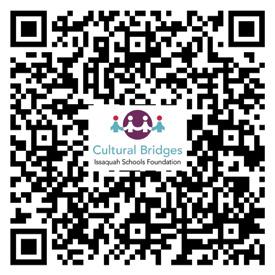
THANK YOU COMMUNITY PARTERS FULL PAGE - REDESIGN Back to School Checklist 6 Support for Special Education 9 Interpretation Services 10 Action Forum for Youth 15 Digital Resources and Laptops 18 Our Cultures 22
Lista de regreso a la escuela Apoyo a la educación especial 9 Servicios de interpretación 10 Foro de Acción para la Juventud 15 Recursos digitales portátiles 18 Nuestras culturas 22 NÚMERO 22
ИНФОРМАЦИЯ -ПУТЕВОДИТЕЛЬ ДЛЯ СЕМЕЙ ПО ШКОЛЬНОМУ ОКРУГУ ISSAQUAH RUSSIAN НОМЕР 22 ОКТЯБРЬ НОЯБРЬ ДЕКАБРЬ 2022 Памятка по подготовке к школе 6 Поддержка специального образования 9 Услуги перевода 10 Форум по Проблемам Молодежи Электронные ресурсы и компьютеры 18 Наши культуры 22 Cultural Bridges THÔNG TIN ĐỂ GIÚP CÁC GIA ĐÌNH TÌM HIỂU VỀ KHU TRƯỜNG HỌC ISSAQUAH VIETNAMESE SỐ 22 THÁNG MƯỜI / MƯỜI MỘT / MƯỜI HAI 2022 Danh Sách Kiểm Tra để Trở Lại Trường Học 6 Hỗ Trợ cho Giáo Dục Đặc Biệt Dịch Vụ Phiên Dịch 10 Diễn Đàn Hành Động cho Thanh Thiếu Niên 15 Tài Nguyên Kỹ Thuật Số và Máy Tính Xách Tay 18 Văn Hóa của Chúng Ta 22 Cultural Bridges帮助家长了解Issaquah学区的相关信息 第22期 | 2022年10月 11月 12月 返校清单 第 6页 特殊教育的支持 第9页 翻译服务 第10页 青少年行为论坛 第15页 数字资源和笔记本电脑 第18页 我们的文化 第22页 Cultural Bridges 학부모들이 이사콰학군에 관련된 정보를 찾는데 도움을 주는 정보 개학 체크리스트 6 특수교육 지원 9 통역 서비스 10 청소년 Action Forum 15 디지털 리소스 및 노트북 18 우리들의 문화 22 제 22호 2022년 10월 11월 12월 Cultural Bridgesイサクア学校生活を上手に乗り切る為に家庭で役立つ情報 新学期チェックリスト 6 特別支援教育のサポート 9 通訳サービス 10 Action Forum for Youth 15 デジタルリソースとラップトップ 18 私たちのカルチャー 22 22号 2022 年10 11 12月 Cultural Bridges ةقطنم سرادمب قلعتي ام لك ةفرعم لع تلائاعلا ةدعاسمل تامولعم رادصلإا مقر 2022(ربمسيد) لولأا نوناك رهش /(بمفون)ي اثلا نيرشت رهش/(ربوتكأ) لولأا نيرشت رهش ةسردملا ى ةدوعلا ةعجارم ةمئاق ةصاخلا ةيبرتلا معد 10 ةيروفلا ةمجرتلا تامدخ 15 بابشلل لمعلا ىدتنم 18 ةلومحملا رتويبمكلا ةزهجأو ةيمقرلا دراوملا 22 انتافاقث Thank You to Our Community Partners
Taking a Break & Self-Care
BY ISD Student
Is taking a break being lazy? Being unproductive? Being irresponsible? Putting off important work? Sometimes, maybe. But what if we switched the perspective? While taking a break, could I be working on other important things? Recharging? Taking care of my social and emotional well-being? Am I being “unproductive” because I’m working on something that seems unimportant? Am I “lazy” because I’m taking care of myself? I believe that taking a break can have very positive results.
I understand that we need to be productive, and taking long breaks isn’t always a good thing. It varies from person to person and situation to situation. But often, it isn’t a choice, and avoiding it can cause a lot of stress. Sometimes taking long breaks causes students to have to stay up until 3 in the morning working.
But does productivity always have to be directly academic or work-related? What if I’m not able to be “productive” without first taking some time for myself? I take breaks to spend some time with friends at a café; that’s my way of recharging after a long day. If I was at home trying to work, there’s a good chance I would have been staring at a blank screen while beating myself up. Instead, I choose to take a break so that the next day I would have the energy to be academically productive again.
In addition to taking a break, I was also working on maintaining social connections, which is very important for my overall wellbeing. In this instance, I was working on self-care, which can come in many different forms, and it is essential.
I truly believe that taking care of yourself and your needs is always worthwhile. And I know that is often mistaken for being lazy when all it means is that you need a moment for yourself.
Now, getting that validation from others, especially parents, can make a huge difference. Parents, if you see your student just staring at a blank screen, not getting anything done, then it might be a good idea to encourage them to take a break and recharge!
When you, a friend, or a family member is taking some time off to take care of themselves, don’t forget to be kind and understanding. They are being very productive!
Issaquah Food and Clothing Bank

If your family is struggling to keep your cupboards and fridge full of healthy, nutritious food, the Issaquah Food & Clothing Bank can help. They offer in-store shopping every two weeks. You can look for all the details on their website: https://issaquahfoodbank.org/ And if you need help filling out their registration form or if you have any questions, feel free to contact our Cultural Bridges Manager, Alicia Spinner:
Influence the Choice is looking for 6th to 12th grade-students who would like to film a two-minute public service announcement about their pandemic experiences and coping strategies. Films may be funny or serious, real or animated, and should be submitted before March 18th. Questions? info@influencethechoice.org

18 RESOURCES
$1,000GRAND PRIZE Influence the Choice 10th Annual Video Contest
Engaging Your Teens Around Tough Situations
When a kid becomes a pre-teen or a teenager, parents often start to worry about some challenging situations with which their kid might get involved. For example, social drama, substance use, cell phone/tech use, etc. As a parent, how can we protect our kids from these tough situations, and how can we communicate with them if such problems happen?
Lauren Kula, MSW, SUDP, the Program Manager of Substance Use Service at Friends of Youth, was invited by Influence the Choice on November 29. She gave our parents some great tips and tools to protect our kids from these tough situations and help them get through them.
Parents usually will notice if their kids have something going on in their daily lives. However, there are some factors that parents should pay attention to:
Protective Factors:
• Positive family relationship/open communication
• Healthy friends, be aware of who your kid’s friends are
• Spirituality
• Extra-curricular activities
• Schedule
• Having a purpose
• Positive affirmations from self and parents/guardians
• Celebration of achievements – even if seemingly small
• Resiliency
Vulnerability Factors:
• Lack of academic support or engagement
• Lack/loss of interest or engagement in extra-curricular activities
• Legal issues
• Friend group that uses drugs/ substances or changing friend groups
• Age when drug/substance use begins: The likelihood of developing a substance use disorder is greatest for those who begin use in their early teens.
• Unclear messaging around substance use or tech use
• Boredom
• Parents/family with substance or tech use disorders
• Domestic violence and other traumatic
events
• Increased secrecy
• Sudden mood, weight, or sleep changes
• Odors on person or belongings/in room
• Coordination changes – stumbling, unsteady on feet, swaying while trying to stand still.
• Flushed skin or re/blood-shot eyes
• Possessions disappearing
If a parent notices something is happening with their kids, they first need to let their kids know that some natural consequences happen. Instead of blaming, focus on how to fix the problem now and prevent it from happening again in the future. Teens need to understand that the trust between them and their parents can break very easily, but rebuilding the trust is hard. When there is a problem, parents can initiate the conversation with their teens. Some quick tips for real talk with teens:
o Do not assume you know everything
o Accept what they say is important
o Keep the focus on them
o Do not criticize
o Give them time to respond
o Thank them for talking with you
When a parent starts the conversation, try to avoid starting with, “Let’s talk.” Ask instead of tell, respond from your heart, follow the you-I-we approach when you disagree, and apologize when you goof up.
Five Core Skills of Motivational Conversation with your teens
• Open-ended questions: Ask questions that allow patient flexibility in responses. Example: “What are the healthiest foods you eat?”
• Affirmations: Positive comments on behaviors or motivations. Example: “You’ve made a lot of effort to include more exercise in your weekly schedule!”
• Reflections: Mirroring the teen’s “meaning” of statements. ExampleTeen: I am sick of having to keep track of all my homework. Parent: It is hard to manage all your homework, and you are getting frustrated.
• Summarizations: Provide an overview of important components of what the
teen has communicated. For example: “To summarize our conversation so far, you feel good about the progress you’ve made in improving your xxx, but you’re experiencing a few barriers, such as xxx.”
• Informing and advising: With permission, elicit from the teen about what he/she wants to learn more about, then provide information. Example: “Would it be alright if I provide more information about hygiene? What would you like to learn more about? OK …”
Parents can use the above five core skills to have an honest conversation with their teens. Make sure to express empathy, develop discrepancy, roll with resistance, and support their self-efficacy.
Lauren shared many great resources she used as her reference for her speech that parents can also use or check:
•Friends of Youth: https://www.friendsofyouth.org
• Washington Recovery Help Line: http://www.warecoveryhelpline.org
• Parenting Classes (Friends of Youth has a group!)
• Changes Parent Support Group https:// cpsn.org/
• Adopt healthy behavior of your own
• Eliminate or decrease your use (at least in front of your teen!)
• StopOverdose.org
• Read: "Beyond Addiction" and "All You Need is Love: The Art of Mindful Parenting"
• https://the20minuteguide.com/ parents/introduction-guide/
Parents can also reach Friends of Youth directly for any questions related to their teens by calling 425-392-6367 or emailing ClientServices@friendsofyouth.org/ LaurenK@friendsofyouth.org.
Friends of Youth is a nonprofit 501(c)(3) organization dedicated to serving youth and young families facing circumstances of homelessness, foster care, and behavioral health challenges.
19 RESOURCES
Mom's Homemade Meat Rice Ball
BY IDA ZHANG Creekside Elementary Parent
As a girl born and raised in Chengdu, Sichuan, I love all sticky and gooey things.
The agriculture in Sichuan is different from the northern areas; most farmers there produce white, raw flour. Many delicious foods include crispy, soft, sweet, spicy, and various combinations of textures and flavors. Whenever I miss home, I remember the special foods that have really become a part of me.
Most people in China have rice balls during the Lantern Festival. But in Sichuan, rice balls are a common breakfast choice. I remember when I was five years old, I used to stand on the bridge over the Shahe River and watched the chef scoop some delicious rice balls from the steaming pots and place them in a small porcelain bowl with a white background and blue flowers. This was the highlight of my week!
My family's signature recipe for rice balls gradually evolved into a taste of fresh meat and sprouts. And although my father loves to eat the meat rice balls so much, my mother is responsible for the preparation. She usually mixes the thawed meat filling with chopped ginger, sprouts, wine, salt, soy sauce, and sugar the first night. She then stirs it into a mixture of meat before putting it in the refrigerator so that the harder meat filling is easier to wrap into rice balls the next morning. After mixing the glutinous rice flour with water to form a dough, it gets refrigerated and then quickly wrapped and put into a pot the next morning. Growing up, it was always great to wake up in the morning to a steaming bowl of meat rice balls.
After I left home to go to school, work, and then to study abroad, the way I love food turned me from a person who knows nothing about cooking into a cook who could make good and tasty dishes. I grew from a daughter to a mother. I have learned many, many dishes that I have eaten and many new ones. With the convenience of this connected
world, I can cook far more dishes than my parents and basically learn how to cook whatever I want to eat. At the same time, I am also using food to develop my children's imagination of China: I make dumplings at New Year's; I make mugwort at Qingming; I make zongzi at Dragon Boat Festival; I make mooncakes at Mid-Autumn; I make sausages at Midwinter ...... I also make rice balls at Lantern Festival, but I only make sweet fillings, not meat fillings.
It is not that I cannot; it is only because it has become such an important childhood memory for me! I only want to eat the meat rice balls my mom makes me. If my mom does not make it, I will not eat it!
Due to these three years of Covid Pandemic, people who live abroad have not been able to go and see their family members in China. Some people have even lost their families during the pandemic. I am fortunate that my mother came to visit us recently, and I was finally able to eat her homemade meat rice balls again! I hope all Chinese who live aboard can reunite with their families soon.
Chinese Lantern Festival and Tangyuan (Rice Ball Dumpling)

Chinese Lantern Festival is a traditional festival celebrated on the fifteenth day of the first month in the lunisolar Chinese calendar, during the full moon. Usually falling in February or early March on the Gregorian calendar, it marks the final day of the traditional Chinese New Year celebrations. As early as the Western Han Dynasty (206 BC–AD 25), it had become a festival with great significance.
Eaten during the Lantern Festival, tangyuan '汤圆' or yuanxiao '元宵' is a glutinous rice ball typically filled with sweet red bean paste, sesame paste, peanut butter, etc. It can be boiled, fried, or steamed; each has a unique taste. Chinese people believe that the round shape of the balls and the bowls in which they are served symbolize family togetherness. Eating tangyuan or yuanxiao may bring the family harmony, happiness, and luck in the new year.
OUR CULTURES 20
How to Make Sweet Dumplings
BY JINGYAN XU 5th Grade student at Endeavour Elementary
What are Sweet Dumplings? Have you ever eaten sweet dumplings? Or have you seen them in supermarkets? Here I will share some fun facts about sweet dumplings with you!
First, sweet dumplings are a traditional Chinese food. There are two types of sweet dumplings: rice glue balls (Yuan Xiao) and glutinous rice balls (Tang Yuan). Rice glue balls and glutinous rice balls do indeed look the same, have some ingredients that are the same, and get cooked similarly, but that is about it.
There are many differences between rice glue balls and glutinous rice balls. Such as the fact that the rice glue balls are eaten in Northern China, whereas glutinous rice balls are eaten in Southern China. The stuffing in rice glue balls is made from sweet ingredients, such as sesame, red bean paste, rose, and hawthorn. While the stuffing in glutinous rice balls can be sweet, savory, vegan, or meat. Other than that, rice glue balls and glutinous rice balls are wrapped differently.
Here I will share the details and steps for making both rice glue and glutinous rice balls.
Rice Glue B alls (Yuan Xiao) Let’s make some red beans paste flavored rice glue balls!
Ingredient List:
(Makes twelve rice glue balls) Stuffing:
• Red bean paste (from Asian grocery stores): 144g
• Cooked glutinous rice flour: about 50g Wrapping:
• Glutinous rice flour: about 300g
• One bowl of water
1. Prepare the stuffing. If the red bean paste is too sticky, add some cooked glutinous rice flour until you can make a ball with the paste. (I added 20g)
2. Divide the stuffing into twelve equal pieces and roll them into balls.
3. Cover a plate with cooked glutinous rice flour. Place the stuffed balls onto the plate and put them in the freezer for at least 20 minutes.
4. Fill a big bowl or an 8-inch baking dish with glutinous rice flour. Also, fill one bowl of water and place it aside.
5. Take the stuffed balls out of the freezer.
6. Place 3-4 stuffed balls inside the big bowl/baking dish and shake the big bowl/ baking dish gently, allowing the stuffed balls to coat themselves with the powder.
7. Place the stuffed balls that are coated with powder inside a sifter. Dip the sifter into the bowl of water and hold for three seconds.
8. Repeat steps 6 and 7 for 8-10 times.
9. Refrigerate the balls.
Glutinous Rice Balls (Tang Yuan)

Let’s make some meat-flavored glutinous rice balls! (If you want to eat red bean paste flavored-glutinous rice balls, replace the stuffing with red bean paste.)
Ingredient List: (Makes sixteen glutinous rice balls)
Stuffing: 100g minced pork 1 tbsp soy sauce ½ tbsp dark soy sauce 2/3 tbsp sugar
2 tbsp chicken broth
Wrapping: 1 cup glutinous rice flour ½ cup water
1. Put all the stuffing ingredients into a bowl. Stir until all the chicken broth is fully absorbed into the meat. You will see the meat gaining a bit of stickiness when it is ready.
2. Separate the stuffing into 16 balls. You can freeze them to make the wrapping process easier.
3. Mix the wrapping ingredients until it does not stick to your hand. You can adjust the wrapping by slightly adding water or glutinous rice flour.
4. Remove 8-10 grams of the dough and cook it in a pot of boiled water until it floats up.
5. Mix the cooked dough with the raw dough.
6. Knead the dough and divide it into 16 equal pieces. Cover the dough with a wet paper towel to keep it moist.
7. Take the stuffing out of the freezer.
8. Take one piece of the dough and roll it into a ball.
9. Use your thumb to make it into a bowl.
10. Insert one stuffed ball into the bowl and seal the opening.
11. Roll it into a ball. Repeat steps 8-10 to wrap all the stuffing balls.
12. Refrigerate the balls.
How to Cook Sweet Dumplings?
Boil water in a pot. Put the balls inside the boiling water. Use a spoon to stir them gently to prevent the balls from sticking. Turn the heat down to medium and cook until the balls float to the surface. Cook for another 5-8 minutes, and it is ready to eat. Serve the sweet dumplings hot with soup, and enjoy!
The History of Sweet Dumplings
Do you know how long people have eaten sweet dumplings in China? Well, the answer is that in the official records, people have been eating sweet dumplings as long ago as in the Song dynasty! That is nearly a thousand years ago! Other forms of sweet dumplings are said to have existed in the Warring States period in China about two thousand five hundred years ago.
Sweet dumplings are eaten during the Lantern Festival (the 15th day of the first lunar month). The Lantern Festival originated from the 7th emperor of the Han dynasty (156 B.C.). At the time of the Han dynasty, the Lantern Festival was used for sacrificing to the Chinese god (Tai Yi).
Over time, the Lantern Festival became a national holiday where people can view colorful lanterns, play a couplets game, guess lantern riddles, watch lion and or dragon dances, and, of course, eat sweet dumplings! There are many more things that you can do at the Lantern Festival temple fair.
Why do people eat sweet dumplings? According to folk experts, people eat it because it represents the reunion of the family. Sweet dumplings floating in the boiling water look like the moon in the sky. In China, the moon represents reunion, so eating sweet dumplings means a happy, united family.
Although sweet dumplings are tasty, you should not eat too many because the wrapping is made from glutinous rice, so if you eat too much, you will get indigestion. In China, there is an old saying: “Serve it hot, eat it slowly, don’t get scalded, and don’t choke.”
21 OUR CULTURES
Numbers and Their Meanings in the Chinese Culture

People around the world have been fascinated with numbers from the earliest time. “The ancient Babylonians observed the movements of the planets, recorded them as numbers, and used them to predict eclipses and other astronomical phenomena. The priesthood of ancient Egypt used numbers to predict the flooding of the Nile.” (Ian Stewart, Britannica)
Numbers are also associated with beliefs, religions, and language. The biblical “number of the beast,” 666, is probably a good example of this practice. 666 is an equivalent of faithlessness to Christians. However, if you ask a Chinese speaker what this number means, you will be surprised to find that 666 is a popular “number word” among Chinese-speaking Internet users. It is used to show respect to someone who is highly skilled in playing games or anything else.
Their love for the number comes from the fact that “six” sounds the same as “happiness”, “smoothly”, and “skillfully”. Therefore, a reply of this number is like typing out “skillfully” three times, which shows highest degree of recognition and respect.
By understanding the meaning of this special number, you have opened the door to the meanings of the numbers in the Chinese language and culture. Their meanings lie in their homophones or similar sounds of other Chinese characters. It is especially true for Cantonese, a dialect of Chinese used in Hong Kong and Guangdong Province. 0 sounds like the respectful way of saying “you”, 1 sounds almost the same as “certainly, will”; 2 is “easy” (in Cantonese) and “stupid or love”(in Mandarin Chinese),” 3 sounds like “life, birth or to do business,” 4 is a homophone for “death,” 5 sounds like “I” in ancient Chinese, 6 sounds like “happiness”,
“smoothly”, and “skillfully”; 8 is similar to “prosperity,” and 9 is a homophone for “eternity or long lasting.”
The most notorious of the numbers is 4. Some buildings, such as the Bank of Trade building in Chinatown, Monterey Park, CA, have no fourth floor just because of the connotation of death (Ian Stewart, Britannica). A cell phone number that ends with 4 will probably not be liked by Chinese speakers; one that ends with 514 will sound like “I will die,” so nobody will choose it. Similarly, if you are a real estate agent, you certainly want to avoid finding a condo, an apartment, or a house with a number or address that ends with 4, such 414.
On the contrary, 6, 8, and 9 are considered auspicious. People of Chinese descent will try their best to pick these numbers for almost anything in life: stock codes, car plate numbers, telephone or cell phone numbers, room numbers, important dates (marriage date, moving date, and new business opening date, etc., on both the lunar calendar and solar calendar). You would not be surprised to find many people get married on June 6th on the lunar calendar.
Now, if you would like to know more about numbers in Chinese Culture, go ahead and check the meaning of these in the sentences below:
1) He’s really 2. / He’s too 2.
2) I love you! 5-2-0! I love you 1-3-1-4!
3) I’m not a 250. Don’t you even try to trick me!
22 OUR CULTURES
BY ALICIA SPINNER, with contributions by Jo Mockford, Giseli Vargas, Mara Schichwarg, Laura Ni, Nana Tsujino, Rita Rojano, Song Park, and Tiffany Phos. All ISD parents.
Every year, before St. Valentine’s Day, Cultural Bridges team members get questions from parents who have never experienced this holiday, or they had but in a very different way. And the reason for that is that this holiday, and the way we celebrate love and friendship, looks different depending on which country you are in.
In Argentina, for example, St. Valentine’s is called The Day of the Lovers. Couples exchange gifts and have special dates. But friendships are celebrated during the Day of the Friend on July 20th, when friends get together to celebrate. They also have the Week of Sweetness from the 1st to the 7th of July. During that week, according to tradition, if you kiss someone, that person should give you a sweet treat.
In Brazil, St. Valentine’s Day is not celebrated. Lovers’ Day is held on June 12th, and couples exchange gifts. But this is also a holiday for couples, and not for friends. Friends Day is on July 20th, and nowadays, kids trade cards just like they do for Valentine’s here.
In China, St. Valentine’s is celebrated on the 7th day of July, but kids do not give cards or gifts to friends at school. But the most important day for lovers, equivalent to the way St. Valentine’s is celebrated in the U.S., is the Shangyuan or Lantern Festival. This traditional event is celebrated on the fifteenth day of the first month of the lunar calendar . It is an important day for young couples to meet up.
In England, Valentine’s Day is celebrated on February 14th. It was here where the tradition of gifting a heartshaped box of chocolates started. Children send cards to only one or two friends who
Valentine’s Day Around the World
they choose as their Valentines. It is not so much a friendship thing but is more related to love. Traditionally, the cards were sent anonymously and by mail, but nowadays, children often make clear who is sending each valentine.
In Japan, this holiday is celebrated on February 14th. Women buy gifts and chocolates for their male companions or lovers. And if a woman wants to go out with a guy or just wants to show him her love, she can give chocolates to him. Men do not return gifts until March 14th, which is called the “white day.” Kids give chocolate to other kids. Schoolaged boys like to show off how many chocolates they get from the girls!
In Mexico, St. Valentine’s Day is celebrated also on February 14th, but it’s called Day of Love and Friendship, and it is celebrated similarly to the U.S., but kids do not exchange little cards at schools. A game that is popular with friends is Secret Friend, comparable with what is called Secret Santa here. Also, it is common for schools to organize a kermes (carnival). One of the most popular booths in this event is where kids can get “married.” They get something to wear, such as a veil for the girl and a hat for the boy. They also need to sign their certificate and exchange rings. At the end, they kiss each other on the cheek! Now, a special way that adults celebrate is by hiring a mariachi band to serenade their loved ones at midnight.
In Colombia, this holiday is also called the Day of Love and Friendship. It is celebrated on the second Sunday of September. They also organize the Secret Friend, even at schools. Kids

take little presents for their secret friends for a week and at the end have a party to unveil the secret friends.
In Thailand, St. Valentine’s looks very similar to that of the U.S., an excuse for shopping, eating out, and a popular day to getting married! But their most romantic celebration is called Loy Krathong or Floating Lantern Festival. This one illustrates the close relationship between the Thai way of life and the water. On the night of the full moon of the 12th Lunar month (usually in November), young couples make wishes for their future together while they release lit floating rafts onto waterways and lakes across the country. Candles and incense are usually lit on the floats making for a beautiful and romantic sight on the waters.
These are just samples of different ways that love and friendship are celebrated around the world. It is important to note that the celebration of Valentine's Day has been banned in some countries, such as Pakistan, Indonesia, and Saudi Arabia, due to beliefs that conflict with Islamic culture. In India, it is common to see protests again this celebration since it is regarded as a front for "Western imperialism."
While Valentine’s Day is recognized worldwide, it's not celebrated by everyone. Whether it be for economic, personal, religious, cultural, or philosophical reasons. However, at some of our elementary schools, and as an optional activity, children are allowed to give their classmates little cards they get in stores or that they create. If your family doesn't celebrate this holiday, please make sure you communicate this with your child’s teachers.
We wish all your days are full of love and good friendships. And if you celebrate this special holiday, we hope you have a very happy one!
23 OUR CULTIURES
2023 Nourish Every Mind Student Showcase
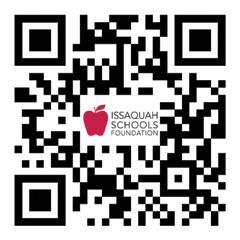
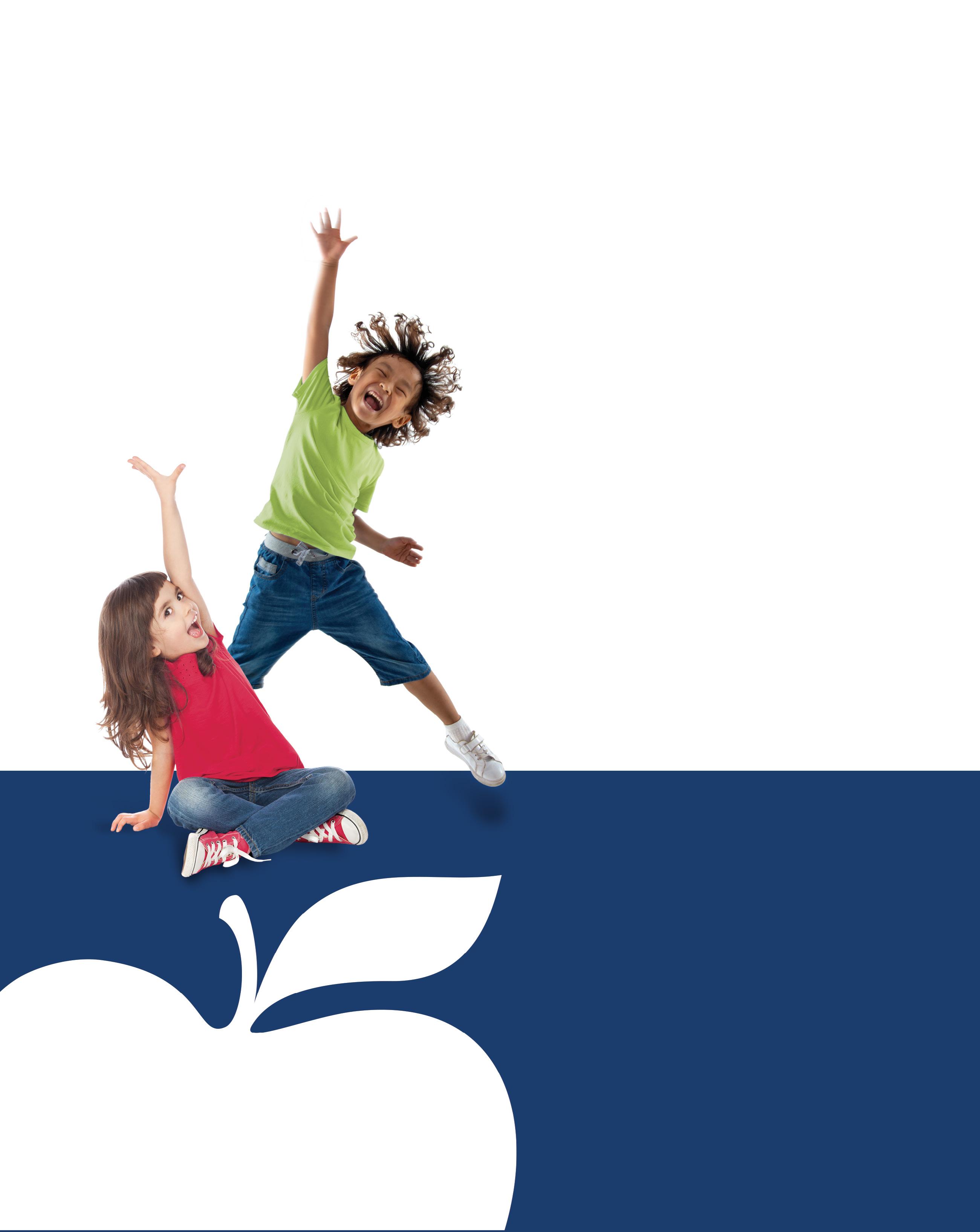
During this 1-hour event, we invite you to reconnect with friends and students over a light lunch as you hear stories of student success and learn more about how you can make a difference.
Fuel
Success
the date! Join us in-person at noon on Thursday, April 27th, to celebrate the return of the Issaquah Schools Foundation’s annual fundraiser, Nourish Every
Student Showcase. More info to come: www.isfdn.org
Reconnect to
Student
Save
Mind






































